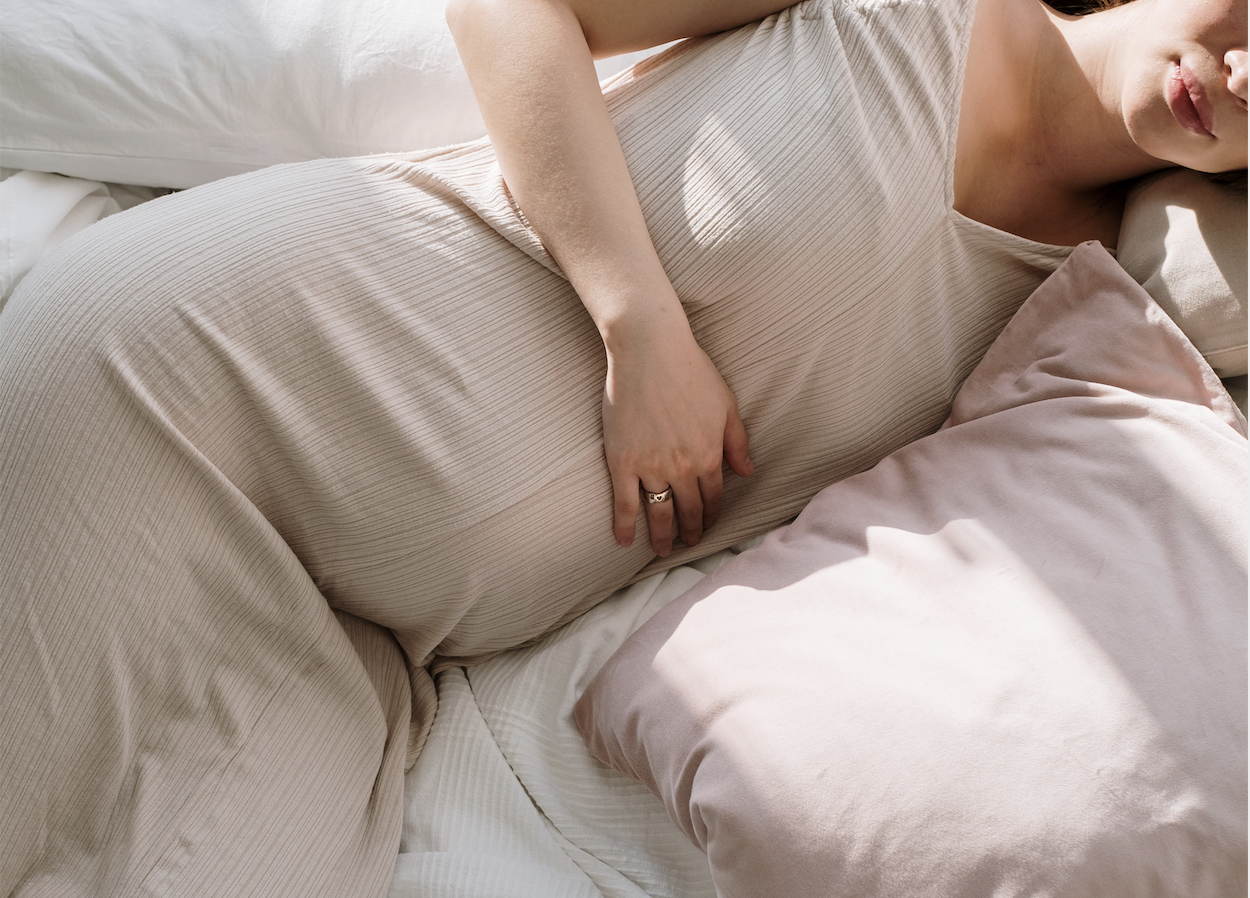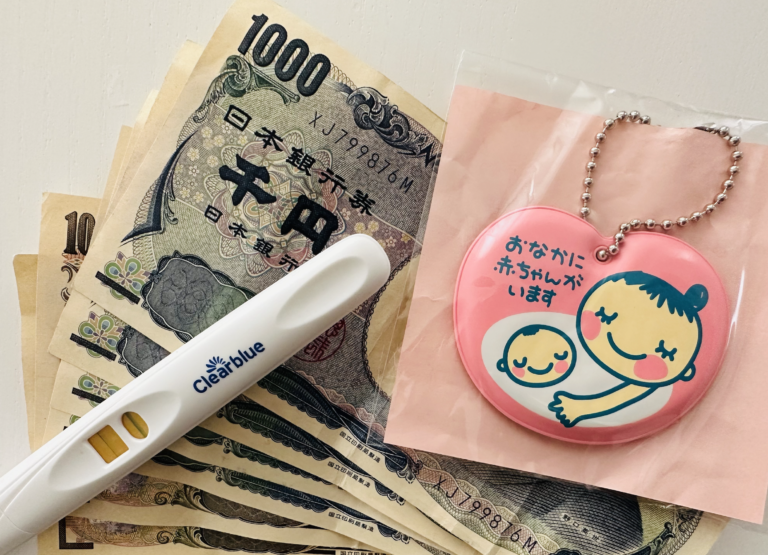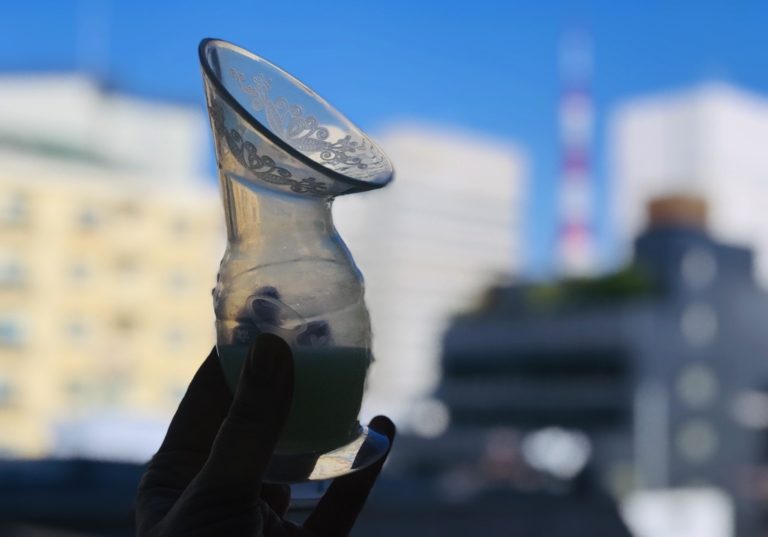How to prepare for labour and a natural birth
From the moment I found out that I was pregnant it was clear for me: I wanted a natural, unmedicated, intervention-free birth. It is the normal and natural way, my grandmother did it 9 times, my mother 3 times so why wouldn’t I? And of course the millions of other women all around the world. Despite my determination I had some fears and concerns though – fueled by the many horror stories the media likes to feed us. From how long labour might last to my biggest fear about tearing. That’s why I started to geek out over what I could do to support a fast delivery as well as avoid tearing.
Being pregnant is one of those things where you quickly realize how little in control you are. In the third trimester and especially on maternity leave with a lot of free time (at least during the first pregnancy) to not overthink any of my fears and to feel like I was actively working on this pregnancy and delivery is what also kept me on track with my ‘third trimester bootcamp’.
When my cousin finished school she got an ok grade. Her comment “I could have easily got a better grade if I had studied more” motivated me to finish school in the best way I could. This sentiment of not wanting to regret what I did or didn’t do afterwards is also what motivated me to prepare for this first birth the best way I could.
After 3 births that all took about 3-4 hours, were natural, unmedicated and intervention free I want to share my third trimester birth preparation bootcamp as it might help other mommas-to-be to prepare for their births and have positive birth experiences like I did.
I am not a doctor, nurse, midwife or from any other health profession. Please always check for yourself and with your care team what is good for you, your body and baby.
Birth Preparation
Basically, birth preparation is all about preparing your mind and your body. I separated the preparation of my body into 2 categories: physical and nutritional, for a lack of better terms.
Mental Preparation
During my first labour when contractions were getting stronger I had a short moment of “F***, how is this baby ever going to come out of me?” and was close to freaking out. I took a deep breath, reminded myself to trust my body and baby and 2 hours later my baby was born. This taught me: One of the most important things during labour and delivery is to keep your mind in check. Your body and baby know what they have to do. The only task you have is to keep your mind from freaking out and to stay relaxed so that your body can do what it’s supposed to do, what it knows to do. How to be able to do that? For me, it helped to be informed and to have techniques at hand that enabled me to relax.
Ina May’s Guide to Childbirth
If you want to get ready for a natural birth, this book is everything. I have re-read it for each pregnancy, I have gifted it and I have lent it to other mommas-to-be.
The first part of the book is a collection of natural birth stories. So if you’re looking for empowering examples and proof that it can be done, this is your source. For me, some of the stories were too far off what I would want during my birthing process so that I skipped it after a few stories. I was lucky to have many mom friends and family members willing to share their birth stories with me.
The second part is an absolute must read though. Ina May details the process of labour. She explains what is happening during the different stages. Furthermore she explains the different mechanisms within the body that support or hinder the natural birthing process. Finally, she shares many great tips how you can set yourself up for an easy, relaxed natural birth and support the birthing process of your baby.
Hypnobabies
Hypnobabies is a method of childbirth. Some might refer to it as hypno-birthing. However, Hypnobabies uses medical-grade somnambulistic hypnosis techniques and provides a complete childbirth education course that includes the partner. The course has everything. It teaches you all you need to know about labour and delivery, how you can prepare for it and gives you the confidence and calmness for an easy and comfortable birthing experience. Read my full review of the course here.
The course is 6 weeks long. For a good effect of the Hypnosis Tracks and Affirmations I recommend to start the course at least by pregnancy week 32 if not a couple of weeks sooner. After 3 pregnancies and deliveries with Hypnobabies this is a 10 out of 10 recommendation from me.
Maternity/Birth Preparation Classes
A maternity class will ideally teach you about the birthing process and how you can support it, too. Attending an in-person class can be very nice to meet other mommas-to-be with similar due dates and to exchange all things pregnancy and baby.
Depending on your needs, really do check the content of the class beforehand so that you won’t end up disappointed. Some focus on breathing, some focus on the what to do when baby is born and to teach dad what to do. Make sure you know what the class offers and whether it aligns with what you still need in your preparation journey.
Physical Preparation
Pregnancy Work Out
Birthing a baby is a process where some of your muscles are doing their best work. This understanding lead me to care for my fitness as best as possible during my pregnancies. Not for looks or anything else but just for health for me and my babies as well as to be ready for the ‘biggest physical challenge of my life” – which is why I jokingly refer to my birth preparation as my third trimester boot camp.
By increasing your stamina, improving muscle tone and flexibility, reducing discomfort, and promoting mental well-being, regular exercise prepares your body for the process of labor, enhances your ability to cope with contractions, and can contribute to a faster and positive birthing experience.
You can stay fit in so many different ways. From regular walks (see below) to yoga, pilates or whatever physical activity it is that you enjoy and is safe for pregnancy. I enjoyed the cardio work outs by BodyFit by Amy on YouTube during my first pregnancies. In my third pregnancy Kayla Itsines launched her pregnancy work out on the Sweat App. I had already done the post partum work out twice so that I had to try the pregnancy work out, too. It is a really good program with exercises for each of the 40 weeks. I have enjoyed having a program to guide me through the pregnancy and found the exercises at the right level of strenuous as a pregnant mom of 2 under 3 and working full time.
10,000 steps a day
If there is one consistent theme among birth preparation that I can remember from all the conversations with other mommas it would be WALKING. Walking while your pregnant for your general fitness. Walking to support baby moving down and into the right positions. Walking as birth preparation due to the muscles that are being used in the process. Walking when in labour to speed up the process. As I said I was geeking out about birth preparation a little so that I made it my mission to walk 10,000 steps every day – until the last day of each pregnancy.
With your Apple Watch, Fitbit, Smart Watch, Sweat App on your phone it will be easy to track whether you’re making enough steps in preparation for an easy delivery.
Commuting to work by train in the bigger Tokyo area made it easy for me while I was still working. Once on maternity leave I walked distances I usually took the train or bike for to get my steps in. Other days I would leave the house at 9.30/10 pm to go for a walk if I hadn’t got my 10,000 steps yet.
Birthing Ball Exercises
As they are not necessarily part of a pregnancy exercise work out like the one mentioned above I do want to mention birthing ball exercises. I started doing exercises on a birthing ball regular from pregnancy week 36 the latest in all 3 pregnancies.
It helps to move baby down, to stretch and to stay flexible in your hip area. There are many examples of birthing ball exercises on YouTube. Here is one that I liked.
Hypnobabies
Besides or within staying fit it is also important to rest, especially when you’re pregnant, and to know how to relax. To stay relaxed during labour and delivery sounds like the most ridiculous tip based all I had heard and thought of labour and delivery before. However, the more you can relax your body, face and every muscles that is not necessary for birthing your baby, the fast and easier labour and delivery will be. Therefore, I am mentioning Hypnobabies here again as the Hypnosis Tracks are a fantastic way to learn how to quickly relax, how to focus on relaxing and how to breath for relaxation.
Accupuncture for birth preparation
Acupuncture is an ancient Chinese practice that involves the insertion of thin needles into specific points on the body. Acupuncture during pregnancy can help to balance energy flow, and alleviate discomfort. When used for birth preparation, it helps to promote relaxation, reduces anxiety, and can even assist in turning a breech baby. Before labor begins, acupuncture can be especially helpful to ripen the cervix, release oxytocin, and encourage a more natural, efficient labor.
I started my birth preparation acupuncture session in the third trimester or pregnancy week +/- 28 with bi-weekly appointments at first. From pregnancy week 36 on we would do weekly sessions.
If you are in Tokyo, you should go to Meadow Acupuncture and Aromatherapy. Her work is magic.
Chiropractor visit for alignment
Maintaining proper spinal alignment and pelvic balance is essential during pregnancy. Regular visits to a chiropractor who specializes in prenatal care can help optimize pelvic alignment, reducing potential imbalances or restrictions that may hinder the baby’s descent during birth. Chiropractic adjustments can also provide relief from common pregnancy discomforts, such as back pain and sciatica, promoting overall well-being and a more comfortable birthing experience.
Some people go to the chiropractor for alignment on a regular basis and you can continue to do so during pregnancy. As I wasn’t going regularly I went for the first time about 2 months before my due date to check how aligned I was. For all my 3 pregnancies I went to chiropractor in the last trimester. With the 1st and 3rd pregnancy mainly to ease my mind that my body was aligned and in a good condition to birth my babies. For my second pregnancy, I actually needed treatment of terrible hip pains. Luckily in each pregnancy I only took 3-4 sessions.
For any momma-to-be located in Tokyo, I can highly recommend Suto Healing Center in Azabu Juban.
Perineum Massage
Perineum massage is a technique that involves gentle stretching and massaging of the perineal area, the tissue between the vaginal opening and anus. This practice aims to increase flexibility and elasticity, reducing the likelihood of perineal tears or the need for an episiotomy during birth. Regular perineum massage, starting around 34 weeks of pregnancy, can help improve blood flow, enhance tissue elasticity, and instill confidence in the body’s ability to stretch during delivery.
To support the massage in its mechanical sense and the skin to be strong and stretchy, it is recommended to use an oil. I used the Weleda Perineal Massage Oil.
Hayflower Steam Baths
Hayflower steam baths, also known as herbal vaginal steaming, have been used for centuries to promote reproductive health and prepare for childbirth. By infusing water with a blend of herbs and sitting over the steam, the gentle heat and herbal properties work together to improve blood circulation, relax pelvic muscles, and soothe any discomfort. This natural practice can enhance overall vaginal health and potentially facilitate a smoother birth experience.
The herbs that I found recommended in Germany are hayflowers. Learn more about how to prepare a Hayflower Steam Bath and its benefits for birth.
The general recommendation is to start taking a steam bath once or twice a week from pregnancy week 37 or 38. The closer you get to your due date the more often you can take it. If you enjoy the steam you can start doing it daily. It is recommended to take a bath especially when your labour starts.
Nutritional Preparation
Proper nutrition plays a vital role in preparing for a natural birth. A well-balanced diet rich in essential nutrients, vitamins, and minerals can support fetal development, strengthen the immune system, and promote optimal energy levels for labor. Focus on consuming fresh fruits and vegetables, lean proteins, whole grains, and healthy fats. Staying hydrated is equally important, so aim for an adequate intake of water throughout each day.
Red Raspberry Leaf Tea
Red raspberry leaf tea is a popular herbal remedy used by many expectant mothers. This tea is known for its uterine toning properties and potential ability to strengthen and tone the muscles of the uterus, making contractions more effective during labor. Consuming red raspberry leaf tea in moderation during the third trimester may help prepare the uterus for labor and potentially reduce the duration of the second stage of labor.
Recommendations on when and how much to drink vary among online sources. The most I found recommend 1 cup per day from pregnancy week 32. You can increase the number of cups to 2-3 towards the end of the pregnancy.
Evening Prim Rose Oil
Evening primrose oil, derived from the seeds of the evening primrose plant, is often recommended for cervical ripening. It contains an essential fatty acid called gamma-linolenic acid (GLA), which may help soften and prepare the cervix for childbirth. Evening primrose oil capsules can be taken orally or inserted vaginally, following healthcare provider guidance, during the final weeks of pregnancy.
I started taking one capsule daily from 34 weeks of pregnancy orally and 1 capsule vaginally daily from pregnancy week 36.
Flaxseeds
Flaxseeds are a rich source of omega-3 fatty acids and fiber. Including flaxseeds in your diet during pregnancy can help promote regular bowel movements and reduce the risk of constipation. They have a positive effect on the mucous membranes of the vagina and stimulate mucus production. This makes the expulsion phase of the birth easier and shorter. Additionally, omega-3 fatty acids have been associated with brain development in the fetus.
Mommas-to-be can start having 1-2 teaspoons of flax seeds per day from pregnancy week 34 – 35. Adding them to cereals is an easy way to add them to your diet.
Contractions Cocktail
The contractions cocktail I used during my pregnancy is not to be confused with the “labor-inducing cocktail,” a mixture of natural ingredients that some women try near the end of pregnancy to stimulate labor. For a lack of better translation from the German “Wehencocktail” I am using the English term contractions cocktail. This cocktail is not aiming at inducing labour but rather at strengthening your uterine muscles so that every contraction will be effective. Effective contractions will lead to a faster birth. The ingredients are ginger, cloves, lemon verbena and cinnamon sticks.
You can start drinking the tea from pregnancy week 36.
Conclusion
Preparing for a natural birth involves a holistic approach that encompasses various practices and techniques. From acupuncture and chiropractic visits to perineum massage, herbal remedies, and nutritional preparation, these items can support your physical and emotional well-being, optimize your body’s readiness for labor, and contribute to a positive birthing experience. Remember to consult with your healthcare provider to ensure these practices align with your specific needs and circumstances. Embrace the journey of birth preparation and trust in your body’s innate strength to bring new life into the world.







